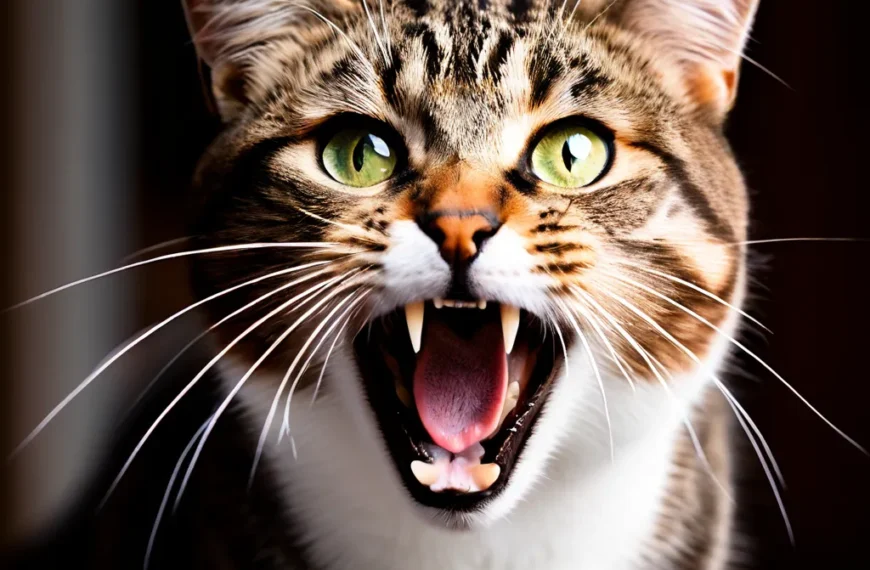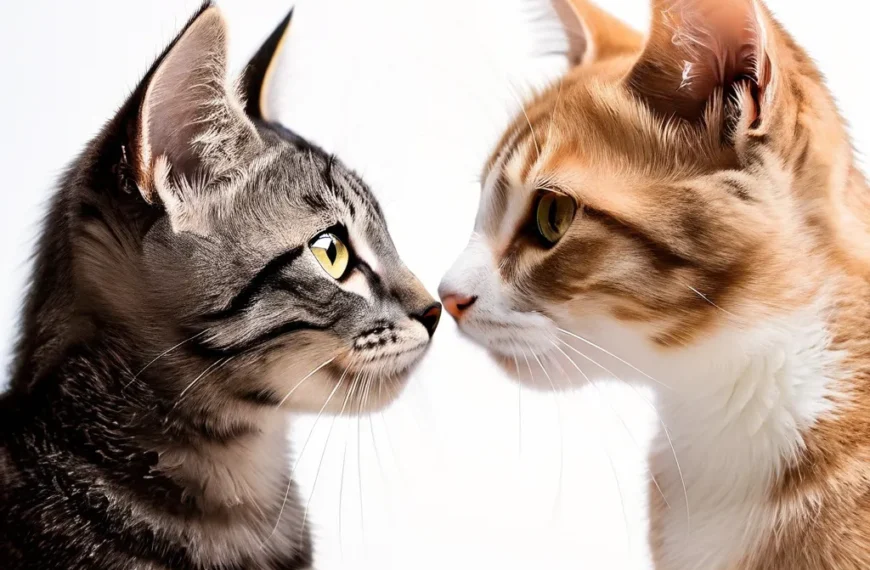Introduction
Are you tired of the constant hissing, spitting, and fighting between your feline friends? Do you find yourself at a loss for how to discipline your cat for attacking another cat, without causing harm or damaging the bond between you and your pet? You’re not alone. Multi-cat households can be a source of joy and companionship, but they also come with unique challenges, especially when it comes to managing aggression and conflict between cats.
As a cat owner, it’s natural to feel frustrated and worried when your cats fight, but it’s essential to address the issue promptly and effectively to ensure the well-being and safety of all pets involved. However, disciplining a cat for attacking another cat requires a thoughtful and informed approach. Punishing or reprimanding your cat can lead to more harm than good, exacerbating the problem and potentially damaging the trust between you and your pet.
In this article, we’ll explore the complexities of cat aggression, provide you with practical guidance on how to assess the situation and separate fighting cats safely, and offer effective methods for disciplining your cat without causing harm. By understanding the underlying causes of aggression and using positive reinforcement techniques, you can help redirect your cat’s behavior and create a harmonious multi-cat household. Whether you’re a seasoned cat owner or a newcomer to the world of feline companionship, this guide will provide you with the knowledge and confidence to tackle even the most challenging behavioral issues and help your cats live in peace and harmony.

Understanding Cat Aggression: Triggers, Signs, and Causes
Cat aggression is a common behavioral issue that can be caused by a variety of factors. Understanding the triggers, signs, and causes of cat aggression is crucial in addressing the problem and preventing it from escalating.
Triggers of Cat Aggression
Cat aggression can be triggered by various factors, including:
- Fear: Cats may become aggressive when they feel threatened or scared. This can be due to a new environment, a new pet or person in the home, or a loud noise.
- Territorialism: Cats are territorial animals and may become aggressive when they feel their territory is being threatened.
- Pain or discomfort: Cats in pain or discomfort may become aggressive due to irritability or frustration.
- Medical issues: Certain medical conditions, such as hyperthyroidism or arthritis, can cause aggression in cats.
- Genetics: Some breeds of cats are more prone to aggression due to their genetic makeup.
Signs of Cat Aggression
The signs of cat aggression can vary depending on the individual cat and the situation. Some common signs of cat aggression include:
- Hissing or growling
- Swatting or pawing
- Biting or scratching
- Raising the hackles (the hair on the back of the neck)
- Stiffening the body
- Direct staring
Causes of Cat Aggression
The causes of cat aggression can be complex and multi-faceted. Some common causes of cat aggression include:
- Lack of socialization: Cats that are not socialized properly may become aggressive due to fear or uncertainty.
- Lack of exercise or stimulation: Cats that are not provided with enough exercise or mental stimulation may become aggressive due to boredom or frustration.
- Changes in the environment: Changes in the environment, such as a new pet or person in the home, can cause stress and aggression in cats.
- Medical issues: Certain medical conditions, such as hyperthyroidism or arthritis, can cause aggression in cats.
By understanding the triggers, signs, and causes of cat aggression, cat owners can take steps to address the problem and prevent it from escalating. This may involve providing a safe and stable environment, socializing the cat properly, and addressing any underlying medical issues.
Assessing the Situation and Separating Fighting Cats Safely
When cat fights occur, it’s essential to assess the situation and separate the fighting cats safely. This process involves identifying the triggers, signs, and causes of cat aggression to prevent further incidents.
Signs of Cat Aggression
- growling
- hissing
- rigorous grooming of specific areas
- flattened ears
- direct, intensified staring
- tail twitching
- hair standing up on end
- swiping or scratching
- biting
- yowling or vocalizing
- sudden departure from an area
To prevent injuries, confiscate any items that may have triggered the fight, such as toys, treats, or food. Make note of any repeated triggers to minimize challenges in the future.
Assessing the Causes of Cat Aggression
Common causes of cat aggression include:
- resource guarding: protecting items like food or toys
- territory disputes
- unfamiliarity or stress from new situations or environments
- hormonal or genetic factors
- frustration or boredom
- lack of bonding or insufficient positive socialization
Understanding these causes can help identify when cat intervention is necessary and which measures are most effective.
Safe Separation Techniques
Separating cats involves using barriers, distractions, and physical help to prevent injuries:
- Use barriers like baby gates or dog pens to separate cats without handling them.
- Place treats, toys, or catnip in separate areas to draw the cats away from each other.
- If necessary, use towels or blankets to corral and move cats individually.
When separating cats, wear thick, long sleeves, gloves, and a wide-tipped object to minimize harm.
Long-Term Solutions
To promote long-term harmony between cats, consider the following:
- Maintain separate spaces or ‘cat condos’ for each feline to avoid territorial disputes.
- Ensure each cat receives quality time with their human caretaker for bonding and affection.
- Provide a varied selection of toys, feeding stations, and scratching posts to reduce competition for resources.
- Regularly assess your multi-cat household’s dynamics, understanding that harmony may take time and patience.
Conclusion:
For a harmonious multi-cat household, it’s crucial to understand cat aggression and how to assess and separate fighting cats safely. Identifying the cause, recognizing signs, and implementing safe separation techniques will help ensure a peaceful environment for your furry friends.
Why Positive Reinforcement is Key in Disciplining a Cat for Attacking Another Cat
When it comes to disciplining a cat for attacking another cat, it’s essential to use positive reinforcement techniques. Positive reinforcement is a powerful tool that can help your cat learn good behavior and reduce aggression towards other cats.
What is Positive Reinforcement?
Positive reinforcement is a training method that focuses on rewarding good behavior rather than punishing bad behavior. This approach encourages your cat to repeat the desired behavior by associating it with a positive outcome. In the context of disciplining a cat for attacking another cat, positive reinforcement can help your cat learn to interact with other cats in a peaceful and respectful manner.
Why is Positive Reinforcement Effective?
Positive reinforcement is effective for several reasons:
- Encourages Good Behavior: By rewarding good behavior, you encourage your cat to repeat it. This helps to reinforce positive interactions between your cat and other cats.
- Reduces Stress and Anxiety: Positive reinforcement is a low-stress approach that doesn’t involve punishment or negative reinforcement. This helps to reduce your cat’s stress and anxiety levels, making them more receptive to learning.
- Builds Trust: Positive reinforcement helps to build trust between you and your cat. When your cat associates you with positive outcomes, they’re more likely to listen to you and respond to commands.
How to Use Positive Reinforcement
Using positive reinforcement to discipline a cat for attacking another cat involves several steps:
- Identify the Trigger: Identify the trigger that causes your cat to attack other cats. This could be a particular cat, a specific location, or a certain situation.
- Reward Calm Behavior: When your cat remains calm in the presence of the trigger, reward them with treats, praise, and affection.
- Gradually Increase Exposure: Gradually increase your cat’s exposure to the trigger while continuing to reward calm behavior.
- Desensitize Your Cat: Desensitize your cat to the trigger by exposing them to it in a controlled and safe environment.
By following these steps, you can help your cat learn to interact with other cats in a peaceful and respectful manner. Remember to always reward good behavior and avoid punishment or negative reinforcement.
Effective Methods for Disciplining a Cat Without Causing Harm
When it comes to disciplining a cat for attacking another cat, it’s essential to use methods that are effective yet gentle. Disciplining your cat doesn’t have to mean causing physical harm or emotional distress. In fact, using positive and humane methods is crucial for maintaining a healthy and harmonious relationship with your cat. Here are some effective methods for disciplining a cat without causing harm:
- Time-outs: Temporarily separating your cat from the other cat or from its environment can help to calm it down and prevent further aggression. Place your cat in a quiet room or area with food, water, and litter, and let it calm down before reintroducing it to the other cat.
- Redirection: Redirect your cat’s attention to a toy or a different activity when you notice aggressive behavior. This can help to distract your cat from the stimulus that triggered the aggression and prevent further attacks.
- Positive Reinforcement Training: Reward your cat for calm behavior around the other cat. Use treats, praise, and affection to reinforce positive behavior, such as calmly coexisting with the other cat.
- Verbal Commands: Use verbal commands, such as “no” or “stop,” to interrupt aggressive behavior. When your cat hears the command, it should associate it with the behavior and stop.
- Environmental Changes: Make changes to your home environment to reduce stress and aggression. This can include separating food and water stations, increasing vertical space, or providing more hiding spots.
- Desensitization and Counterconditioning: Gradually expose your cat to the stimulus that triggers aggression, starting from a safe distance. Reward your cat for calm behavior, and gradually increase the proximity to the stimulus.
- Pheromone Therapy: Use synthetic pheromones, such as Feliway, to mimic natural feline pheromones that promote calmness and relaxation.
Remember, disciplining a cat requires patience, consistency, and understanding. Avoid physical punishment, yelling, or physical restraint, as these methods can cause fear, anxiety, and even more aggression. By using positive and humane methods, you can effectively discipline your cat without causing harm and create a more harmonious multi-cat household.
Redirecting Your Cat’s Aggression into a More Positive Behavior
Redirecting your cat’s aggression into a more positive behavior is a crucial step in managing multi-cat households and preventing further conflicts. By understanding what triggers your cat’s aggression and identifying the warning signs, you can intervene early and redirect their behavior into a more constructive outlet.
Identifying Triggers and Warning Signs
Before you can redirect your cat’s aggression, you need to identify the triggers and warning signs. Triggers can be anything from territorialism, fear, or anxiety, to pain or medical issues. Common warning signs include:
- Ears laid back or flattened
- Tail twitching or lashing
- Pupils dilating
- Vocalization (hissing, growling, or spitting)
- Posturing (arching back, puffed-out fur)
Redirecting Aggression into Play
One effective way to redirect your cat’s aggression is into play. Cats are natural predators, and redirecting their energy into play can help channel their aggression into a more positive behavior. Here are some tips:
- Engage in play therapy: Use feather wands, laser pointers, or toys to engage your cat in play. This can help distract them from the stimulus causing aggression and redirect their energy into a more positive outlet.
- Provide multiple stimulation sources: Offer multiple toys, scratching posts, and climbing structures to keep your cat stimulated and engaged.
- Rotate toys regularly: Rotate your cat’s toys regularly to keep them interested and prevent boredom.
Redirecting Aggression into Affection
Another effective way to redirect your cat’s aggression is into affection. By providing your cat with attention and affection, you can help them associate positive interactions with positive outcomes. Here are some tips:
- Offer treats: Reward your cat with treats for calm behavior, such as sitting or lying down calmly.
- Provide gentle petting: Pet your cat gently, avoiding sensitive areas, to help them associate touch with positive outcomes.
- Create a calm environment: Create a calm and peaceful environment by playing soothing music or using calming essential oils.
Tips for Successful Redirection
To successfully redirect your cat’s aggression into a more positive behavior, keep the following tips in mind:
- Act early: Intervene early when you notice warning signs of aggression.
- Consistency is key: Consistently reinforce positive behavior, such as play or affection, to help your cat associate them with positive outcomes.
- Be patient: Redirecting aggression takes time and patience.
By following these tips and understanding the underlying causes of your cat’s aggression, you can help redirect their behavior into a more positive and constructive outlet.
Long-Term Effects of Not Disciplining a Cat for Attacking Another Cat and Creating a Harmonious Multi-Cat Household
Failing to discipline a cat for attacking another cat can have severe and long-lasting consequences on the well-being and harmony of your multi-cat household. If left unchecked, the aggressive behavior can escalate, leading to a series of negative outcomes that affect not only the cats but also the human family members.
Escalation of Aggression
Without discipline, a cat that attacks another cat will continue to do so, and the aggression can escalate over time. This can lead to more frequent and intense fights, causing physical harm and stress to both cats. The victimized cat may become increasingly fearful and anxious, leading to behavioral problems such as hiding, hissing, or lashing out at other pets or even humans.
Establishment of Dominance Hierarchy
When one cat is allowed to bully or attack another without intervention, a dominant-submissive hierarchy can emerge. The aggressive cat may assume the role of alpha, and the victimized cat may become subservient. This can lead to long-term stress and anxiety for the submissive cat, which can manifest in behavioral problems or depression.
Fear and Anxiety
The presence of an undisciplined aggressive cat can create a culture of fear and anxiety in your multi-cat household. Other cats may become wary of the aggressive cat, leading to a breakdown in social bonds and a lack of trust among them. This can result in a stressful environment where cats are constantly on edge, leading to a decrease in overall well-being.
Impact on Human-Cat Relationships
A multi-cat household with undisciplined aggression can also affect the human-cat relationships. Family members may become stressed and frustrated by the constant fighting, and the presence of an aggressive cat can make it challenging to interact with the cats or enjoy their company. This can lead to a decline in the bond between humans and cats, making it difficult to provide the care and attention they need.
Increased Risk of Disease Transmission
When cats fight, they are at risk of transmitting diseases such as FIV (Feline Immunodeficiency Virus) and FeLV (Feline Leukemia Virus). If left unchecked, the aggressive behavior can increase the risk of disease transmission, putting all cats in the household at risk.
Creating a Harmonious Multi-Cat Household
In contrast, disciplining a cat for attacking another cat can help create a harmonious multi-cat household. By addressing the aggression and teaching cats to coexist peacefully, you can reduce the risk of fights and create a more relaxed environment for all cats.
By understanding the causes of cat aggression, using positive reinforcement techniques, and redirecting aggression into positive behavior, you can create a harmonious multi-cat household.
Conclusion
Disciplining a cat for attacking another cat requires patience, understanding, and a gentle yet firm approach. By recognizing the triggers, signs, and causes of aggression, you can take proactive steps to prevent fights and create a harmonious multi-cat household. Through positive reinforcement, redirection, and effective discipline methods, you can teach your cat to manage their aggression and live peacefully with their feline companions.
Remember, discipline is not about punishment, but about teaching and guiding your cat towards better behavior. By investing time and effort into understanding and addressing your cat’s aggression, you can strengthen your bond with them and create a safe and loving environment for all your feline family members.
In conclusion, disciplining a cat for attacking another cat is a process that requires empathy, consistency, and patience. By following the steps outlined in this article, you can help prevent fights, reduce stress, and create a more harmonious home for all your cats. With time, love, and the right approach, you can help your cat become a more calm, gentle, and loving companion.
By understanding and addressing cat aggression, you can create a more peaceful and loving home for all your pets. Remember to always prioritize positive reinforcement, patience, and consistency when disciplining your cat.
References
- https://vcacanada.com/know-your-pet/cat-behavior-problems–aggression-in-cats-fear-and-territorial-to-other-household-cats
- https://www.aspca.org/pet-care/cat-care/common-cat-behavior-issues/aggression-cats
- https://www.merckvetmanual.com/en-au/cat-owners/behavior-of-cats/behavior-problems-in-cats
- https://www.clearscope.io/blog/how-to-optimize-blog-posts-for-seo
- https://www.aspca.org/pet-care/dog-care/common-dog-behavior-issues/aggression
















